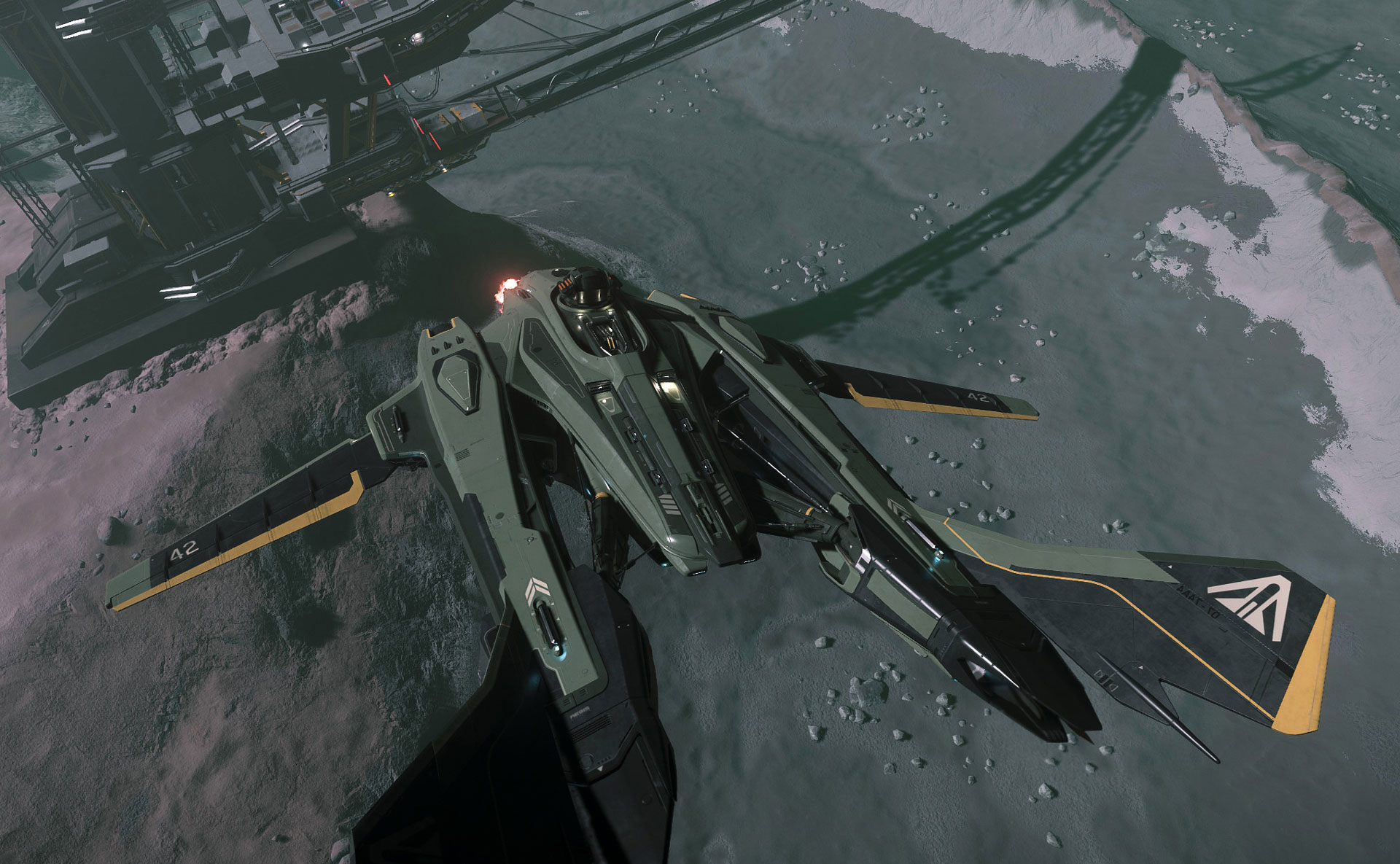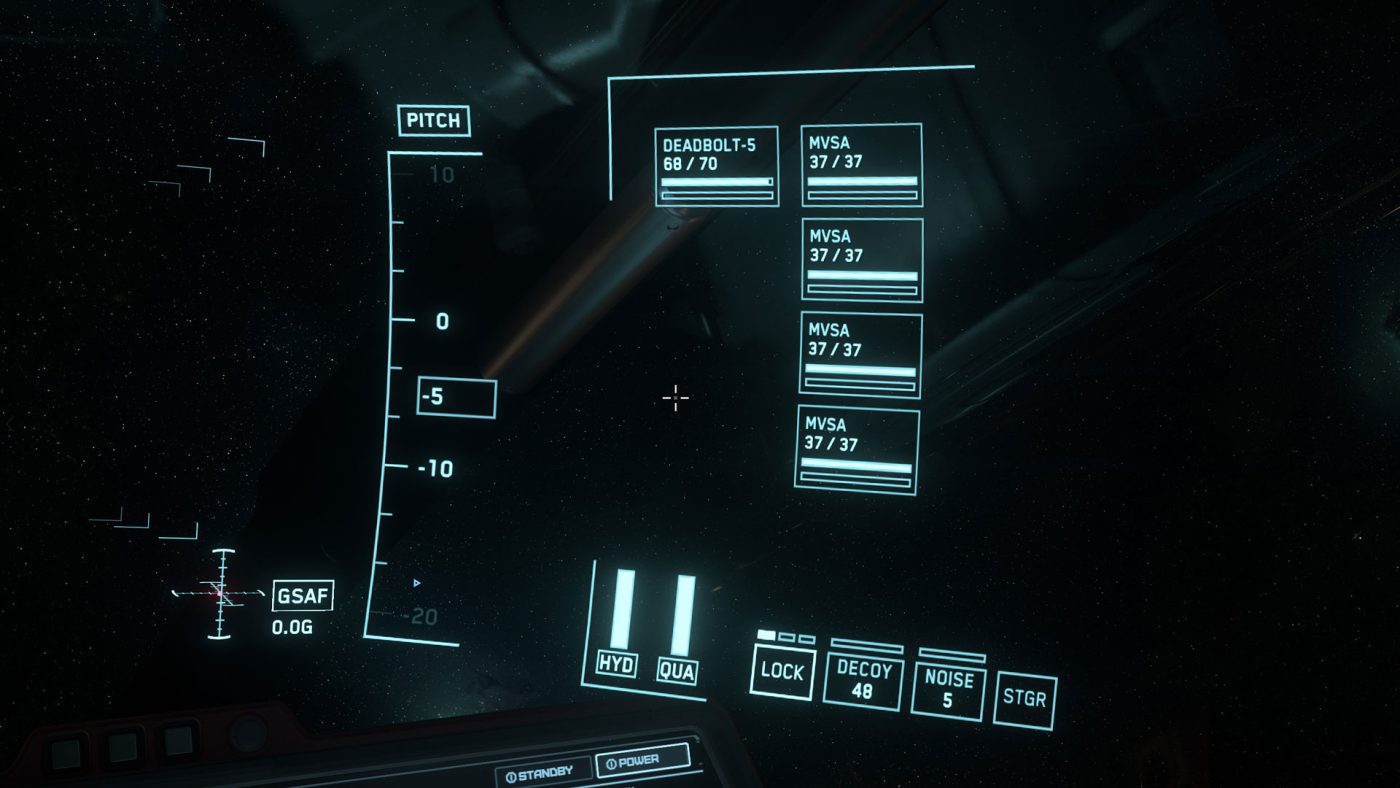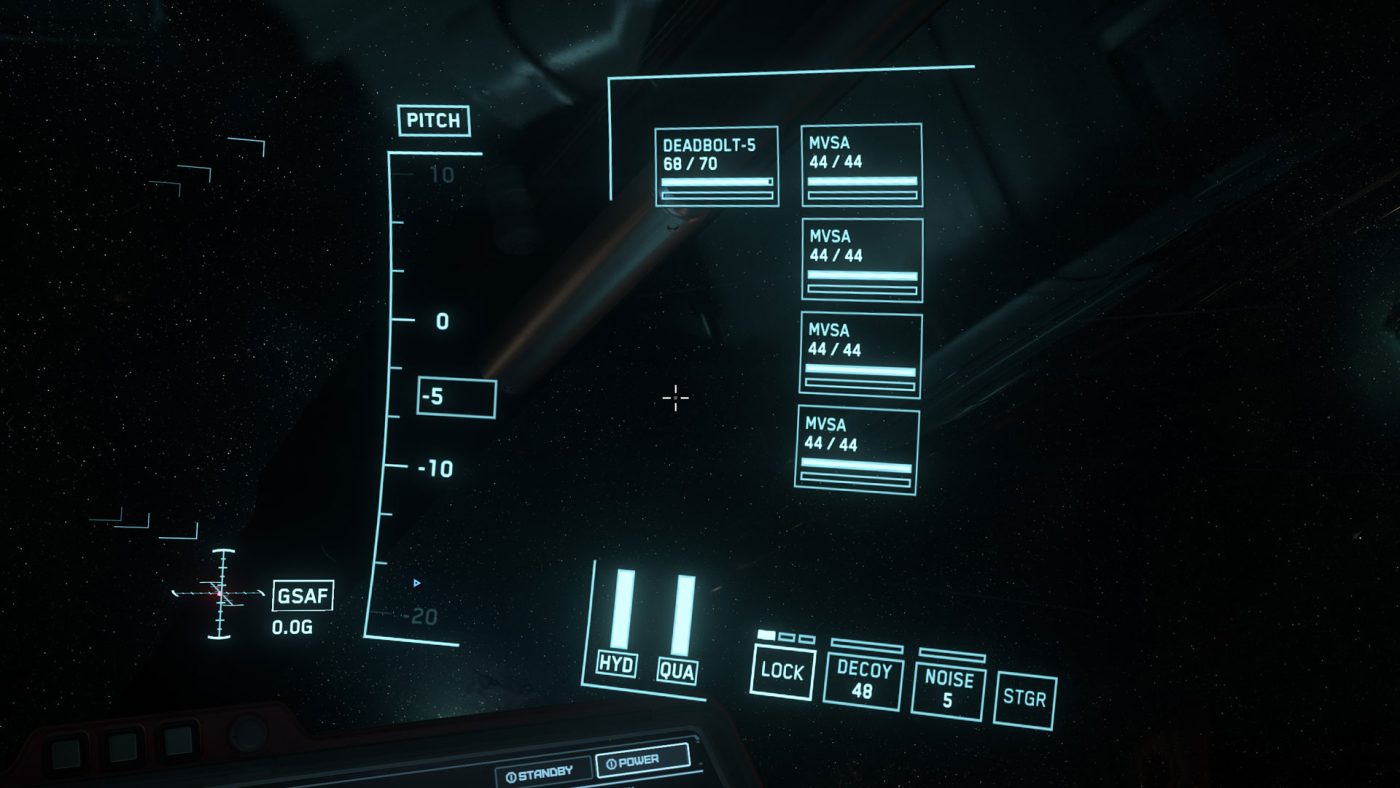If you’ve played games like Elite Dangerous, you’re probably familiar with a number of concepts when it comes to controlling your ship. It goes beyond rotating a stick and handling a throttle: The best pilots also learn how to maximize their available power and even use Newtonian physics to their advantage.
This guide will help you become acquainted with ship control in Star Citizen, so let’s start with the basics: Movement!
Star Citizen’s Flight Model in Combat
We’re going to start off assuming you have some basic flight sim experience: Controlling pitch, rotation and yaw alongside your throttle are all common aspects of any decent flight sim.
In a space sim, however, you’ve also got something not unfamiliar to helicopter sim fans: Thrusters to allow you to slide along the Z-axis (vertically) as well as slide left and right.
You’ve got a lot of freedom of movement, and understanding that every axis is important is crucial when it comes to combat.. A 2 second burst of thrust upwards can mean the difference between 2 people losing at a game of chicken and only your opponent losing.
What makes Star Citizen unique, however, is how available thrust power impacts this.. But first, let’s talk about speed.
Managing your speed in Star Citizen
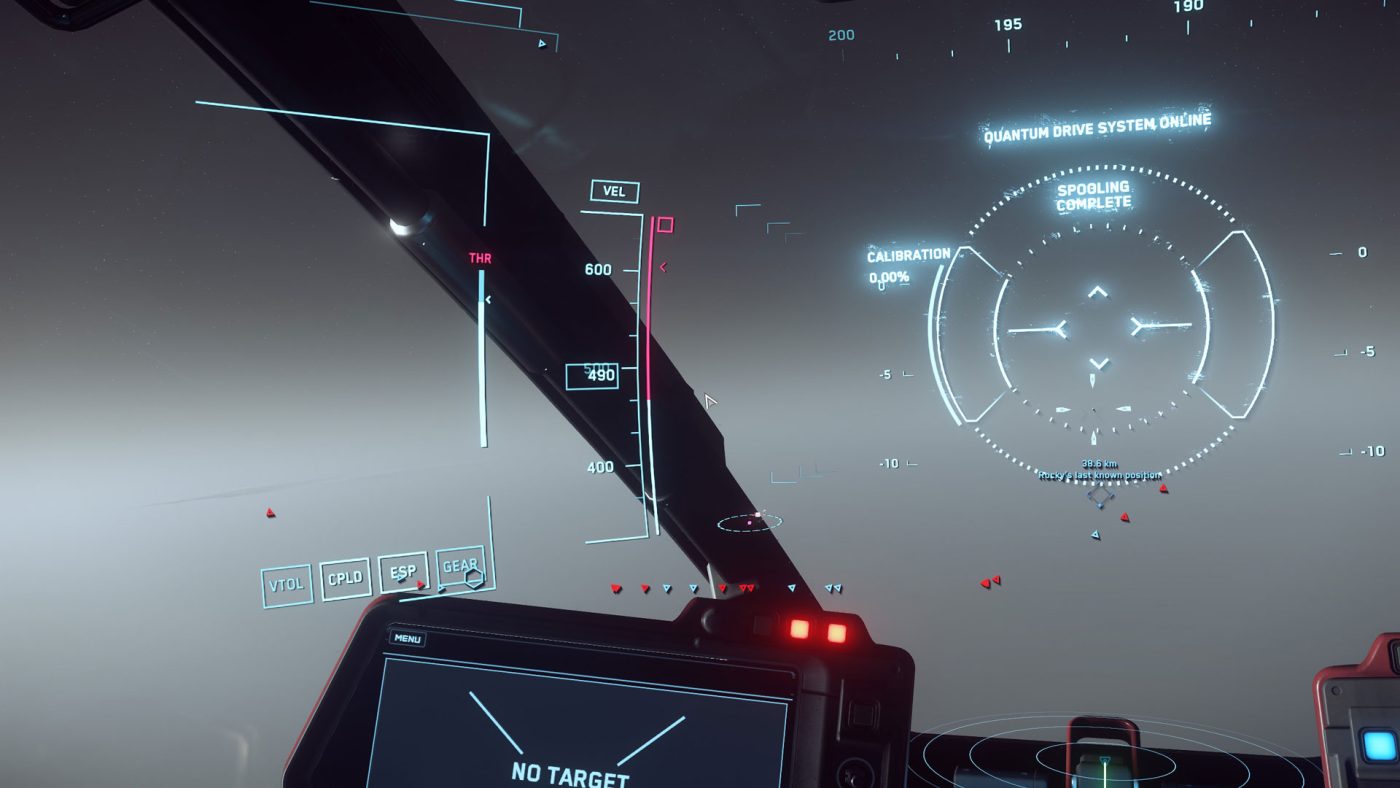
If you take a look at the above screenshot, you’ll notice a few important markings on the left side under the “VEL” section:
- The red square (which is only red when you’re past your effective combat speed) denotes where you’ve set your maximum speed.
- The red arrow (again, only red if you’re past your effective combat speed) denotes your actual speed relative to your maximum.
- The number in the box on the left side is your actual speed in meters per second
- Finally, the vertical line: The red area denotes speeds that are beyond your effective combat speed.
I said “effective combat speed” quite a bit there, so let’s clarify what that is.
Your combat speed is the maximum speed you can have while still retaining solid control in maintaining thrust in the direction you’re pointing as well as being able to reduce your speed effectively should you need to.. So, going beyond this basically means your thrusters beyond your main engines aren’t going to be powerful enough to change your thrust direction in a quick fashion.
Make sense? Great, because I’m about to throw a wrench in it.
If you look at the bottom left of that same screenshot, you’ll see 4 boxes: “VTOL”, “CPLD”, “ESP” and “GEAR”.
We’re going to concern ourselves with “CPLD” for this guide, because it’s the one that’s going to confuse you the most if you’re new to space flight simulation.
“CPLD” stands for “Coupled”.. When it’s highlighted, your ship basically does what you tell it to, and stop when you stop telling it to. If you cut thrust, you’ll stop thrusting forward. If you thrust directly up for 2 seconds, you’ll slow that vertical ascent to a stop.
When you’re in “Decoupled” mode, you instead switch to a method of flight where physics play a much bigger role in how you control your ship: Tap vertical thrusters? As long as you’re outside any significant gravity & atmosphere you’ll keep going up based on the amount and duration of thrust applied.
I will note that this isn’t true Newtonian physics; if it were, adjusting pitch/yaw/rotation would continue to spin you in the direction you went. This is in many ways a good thing, as in most cases with using this sort of flight mode in combat you want to retain easy control of the direction you’re pointing while still moving in a different direction.
Ok, now that we’ve covered that, here’s how we apply all of this into effective combat strategies.
Going above combat speed is great for reaching a target quickly; just make sure to cut it back before you reach your target, because it’ll take significantly longer to slow down and get proper reactionary control so you can engage in combat.
When fighting enemy ships, I like to cut down to my effective combat speed at around 17km when in low-gravity/atmo, and 14-15km when in a more standard earth-normal gravity/atmo. This allows me to get to a good control point and prep for my target before I reach that 10-11km missile engagement & scanner range.
Once I get within engagement range and am going to be dogfighting, I like to leave my max speed setting in blue levels (or sometimes halfway into red) and cut my actual thrust down.
Why?
Because when I reduce the amount of thrust I’m using relative to my maximum set thrust, I actually have more power available for vertical and strafe thrusting, which in essence can allow me to circle-strafe targets and evade enemy fire.. Because traveling in a straight line at combat speeds is a recipe for getting blown up.
And, to add to this.. You may have noticed I skipped over the “THR” skinny bar in the above screenshot.
That’s your overall available thrust that you can play with. When you’ve got your throttle maxed out, you’ll see a tall bright blue line going up to the arrow, and then the rest will be dark blue.
That arrow denotes the maximum standard thrust available to you. The bright blue is how much is being used currently.
So, if you cut your throttle down, you’ll have more thrust to let you maneuver!
Now, remember how I talked about flight in decoupled mode? Yeah, there are a handful of times where that’ll be REALLY useful.
When I’m doing combat while not in atmo, I will occasionally do a strafing run where I keep my speed up and fly right past my target.. And then I hit decoupled, cut thrust, and flip my ship end over end so I can engage the target as they turn to catch up to me.
This strategy works well in 2 cases: When engaging light maneuverable targets that you can eliminate quickly (and want to avoid a dogfight with because you’re less maneuverable), or when engaging big, ponderous targets that take a while to rotate and get a bead on you with their bigger guns.
In most cases this strategy is for when you’re flying something like a heavy fighter (such as the Vanguard Harbinger) that has a little more difficulty changing direction and thrust quickly. By letting Newton do his thing with motion, you can keep your guns on target for longer without worrying as much about the Gs you’re pulling.
Getting out of dodge: Boosting in Star Citizen
Regarding motion, there is one last important function of basic flight we should cover: Boost.
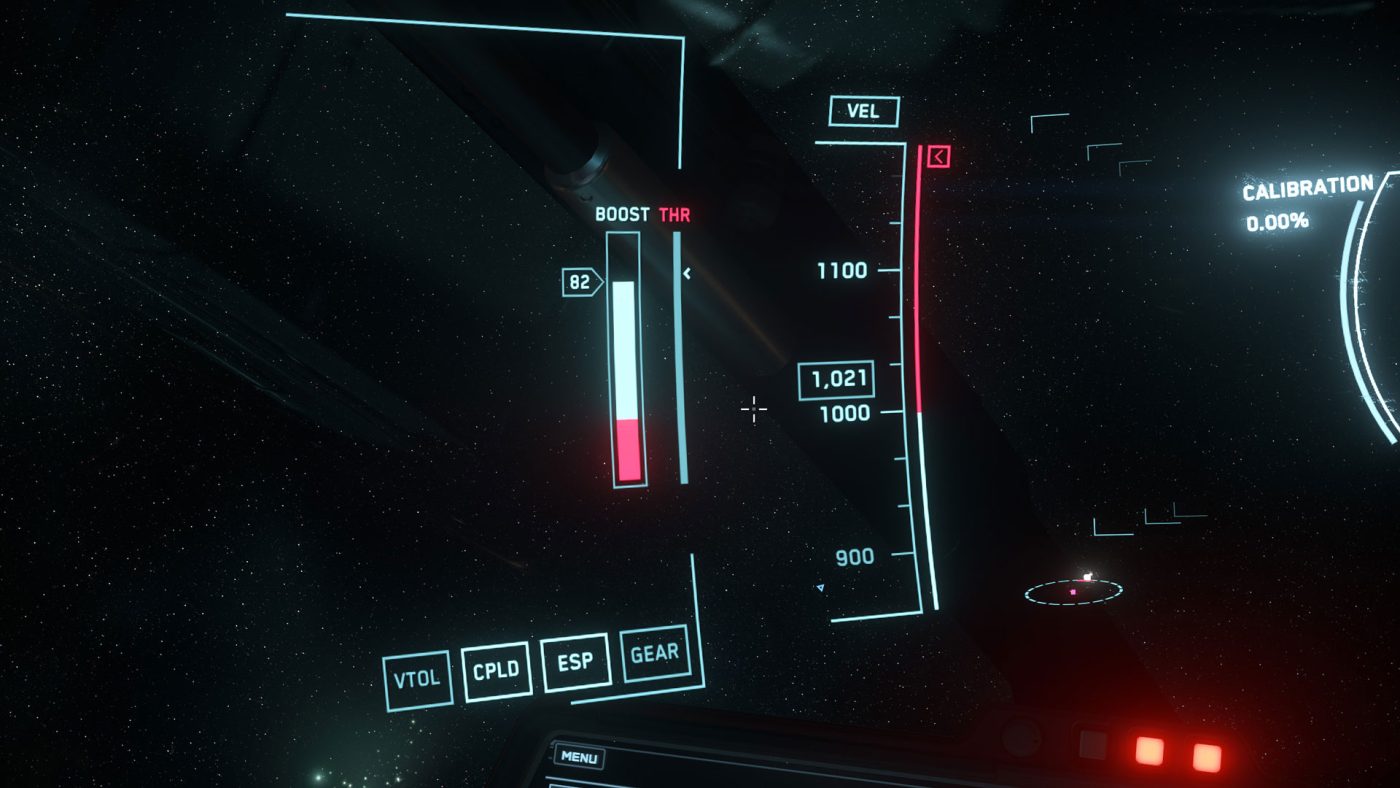
See the thick bar labeled “Boost” with the arrow on the left side of it?
That’s a special meter that lets you basically “hit the nitrous” so to speak on your main engines, letting you accelerate up to your set max speed as quickly as possible.
Boost is also how you get to use up that little extra bit of darker blue above the max thrust arrow right next to the boost meter, too, btw.
A common strategy here is to directly eliminate your bounty, set your max speed to “burn baby burn” levels, and then boost for the nearest Quantum target until you’re out of atmo, you’re quantum drive is spooled, and you’re calibrated to the target.
A fighter-style ship can avoid the worst of enemy fire and let their shields take the brunt while you boost out, even when dealing with the slower speeds available inside an Earth-like planetary atmosphere.
Of course, your boost is limited, and if you creep into the red you risk damage to your engines.. Especially the more you hit it while in the red.
This also consumes more hydrogen fuel, but in most cases this will be of limited concern unless you’re flying something with severely limited fuel capacity.
Speaking of capacity, this is a great time to segue into power management.
Power management in Star Citizen
Alright, if you’ve managed to get through the flight model section above, you’re almost done. I promise. This section will be short.
First, see that triangle in the bottom display of the below screenshot?
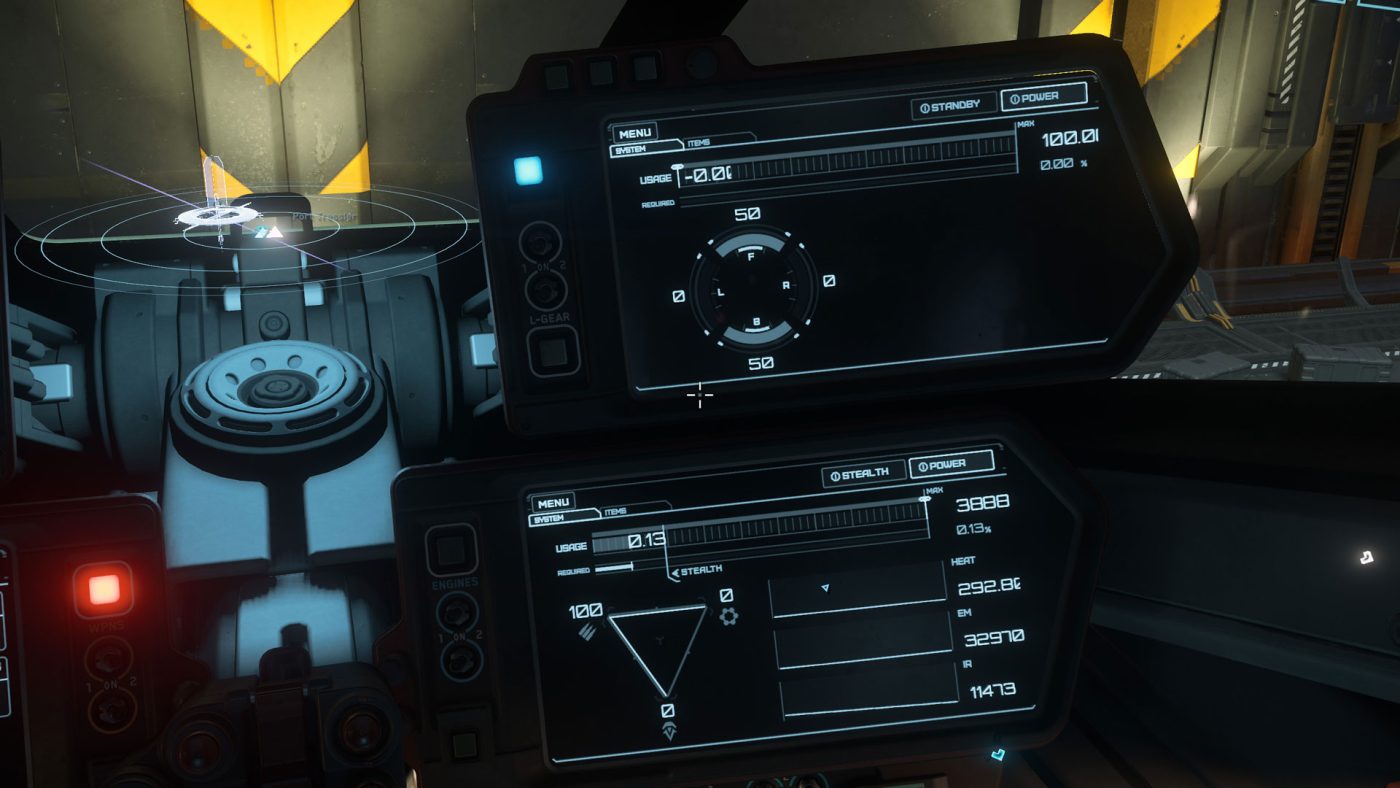
That triangle denotes the distribution of your total max power to each of the 3 main sections: Shields, Weapons, and Thrust.
The default setting for this triangle is an even split between all 3 at 33% each, but in 99% of cases you’ll want to instead do like what I did in that above screenshot: Put all power to a single section.
In most cases you’ll be switching your power between max to weapons, and max to shields, while in combat. Let’s break down each distribution target in detail so you can understand why.
Star Citizen Power Management: Weapons
If you’re running any energy-based (non-ballistic) weapons on your ship, you’re going to want to max this one out at the beginning of every engagement.
Why? I’ll tell you why.
Pushing all your power to weapons gives you more shots from your energy weapons total, and also means the shots recharge much faster.
Take a look at the below screenshots: The first screenshot shows 0 power to weapons, while the other shows maximum power to weapons.
It may not seem like that big of a difference, but those few extra rounds frequently means the difference between eliminating a target on the first pass or eliminating them on the second.. Or even third, if they are fast enough to evade you and your weapons aren’t charging fast enough to keep their shields down!
Note that weapon power (as of writing) does not impact ballistic weapons or missiles in any way: Just energy-based weapons.
Let’s move on to shields.
Star Citizen Power Management: Shields
Shields are going to be your second most important target for maximizing power.. And, also the second easiest mechanic to understand.
While full power to shields doesn’t increase the actual effectiveness of them, it DOES increase the recharge rate.

The rule of thumb is this: Don’t ever let your shields get dropped to 0.
If an engagement is going long, or you’re boosting your way out of an engagement, you’ll want to switch power 100% over to shields before they get too low so they can recharge faster.
Once your shields go down, you’ll have to wait a lot longer for them to start to recharge.. And you’ll be taking some hefty damage.
An additional aspect of shielding is the directional nature of them: You can actually boost power to forward/back, or even side shields if your ship has generators capable of generating a side shield.
In many cases, however, you’ll probably want to leave this alone except in very specific circumstances: It’s rare that you’ll be engaging a target from purely in front of you, or even behind you. Even when boosting away from an engagement you’ll find shots splashing on more than just your rear shields.
Speaking of boosting, let’s talk about the final point in power management: Engines.
Star Citizen Power Management: Engines
Engines are the final – and simplest – power setting in Star Citizen.
Putting power into engines doesn’t impact your maximum speed. It doesn’t impact your turn rate. It doesn’t even impact available power to thrusters, as we discussed previously.
All power to engines does is speed up the recharge rate of your boost.
The only time I ever put power to engines is when I just boosted out and need to get that recharged before I have to use them again.
.. And that’s it!
This was an exceptionally long guide, but very worth it if you want to get deep into ship-based combat in Star Citizen.
Stay tuned for parts 2 (now available here: Star Citizen Space Combat Pt. 2: Weapons) and 3 of this guide series, which will cover weapons and more.
